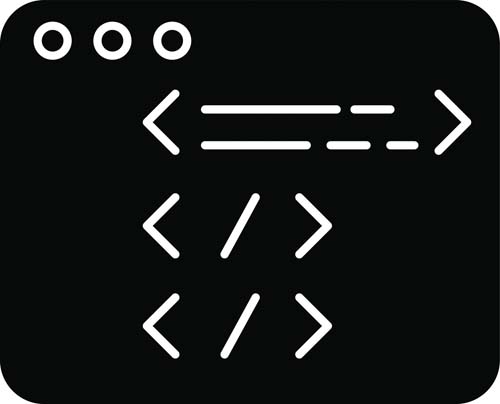ES2022新规发布,8个实用的新功能
新的 ES13 规范终于发布了。
JavaScript 不是一种开源语言,它是一种需要遵循 ECMAScript 标准规范编写的语言,TC39 委员会负责讨论和批准新功能的发布, 那TC39他们是谁?
“ECMA International 的 TC39 是一群 JavaScript 开发人员、实施者、学者等,他们与社区合作维护和发展 JavaScript 的定义。” — TC39.es
他们的发布过程由五个阶段组成,自 2015 年以来,他们一直在进行年度发布,它们通常发生在春天举行发布。
有两种方法可以引用任何 ECMAScript 版本:
· 按年份:这个新版本将是 ES2022。
· 按其迭代次数:这个新版本将是第 13 次迭代,所以它可以被称为 ES13。
那么这次这个版本有什么新东西呢?我们可以对哪些功能感到兴奋?
01、正则表达式匹配索引
目前,在 JavaScript 中使用 JavaScript Regex API 时,仅返回匹配的开始索引。但是,对于一些特殊的高级场景,这还不够。
作为这些规范的一部分,添加了一个特殊的标志 d。通过使用它,正则表达式 API 将返回一个二维数组作为名索引的键。它包含每个匹配项的开始和结束索引。如果在正则表达式中捕获了任何命名组,它将在 indices.groups 对象中返回它们的开始/结束索引, 命名的组名将是它的键。
// ✅ a regex with a 'B' named group capture
const expr = /a+(?b+)+c/d;
const result = expr.exec("aaabbbc")
// ✅ shows start-end matches + named group match
console.log(result.indices);
// prints [Array(2), Array(2), groups: {…}]
// ✅ showing the named 'B' group match
console.log(result.indices.gr
oups['B'])
// prints [3, 6]
查看原始提案,https://github.com/tc39/proposal-regexp-match- indices
02、Top-level await
在此提案之前,不接受Top-level await,但有一些变通方法可以模拟这种行为,但其有缺点。
Top-level await 特性让我们依靠模块来处理这些 Promise。这是一个直观的功能。
但是请注意,它可能会改变模块的执行顺序, 如果一个模块依赖于另一个具有Top-level await 调用的模块,则该模块的执行将暂停,直到 promise 完成。
让我们看一个例子:
// users.js
export const users = await fetch('/users/lists');
// usage.js
import { users } from "./users.js";
// ✅ the module will wait for users to be fullfilled prior to executing any code
console.log(users);
在上面的示例中,引擎将等待用户完成操作,然后,再执行 usage.js 模块上的代码。
总之,这是一个很好且直观的功能,需要小心使用,我们不要滥用它。
在此处查看原始提案。https://github.com/tc39/proposal-top-level-await
03、.at( )
长期以来,一直有人要求 JavaScript 提供类似 Python 的数组负索引访问器。而不是做 array[array.length-1] 来做简单的 array[-1]。这是不可能的,因为 [] 符号也用于 JavaScript 中的对象。
被接受的提案采取了更实际的方法。Array 对象现在将有一个方法来模拟上述行为。
const array = [1,2,3,4,5,6]
// ✅ When used with positive index it is equal to [index]
array.at(0) // 1
array[0] // 1
// ✅ When used with negative index it mimicks the Python behaviour
array.at(-1) // 6
array.at(-2) // 5
array.at(-4) // 3
查看原始提案,https://github.com/tc39/proposal-relative-indexing-method
顺便说一句,既然我们在谈论数组,你知道你可以解构数组位置吗?
const array = [1,2,3,4,5,6];
// ✅ Different ways of accessing the third position
const {3: third} = array; // third = 4
array.at(3) // 4
array[3] // 4
04、可访问的 Object.prototype.hasOwnProperty
以下只是一个很好的简化, 已经有了 hasOwnProperty。但是,它需要在我们想要执行的查找实例中调用。因此,许多开发人员最终会这样做是很常见的:
const x = { foo: "bar" };
// ✅ grabbing the hasOwnProperty function from prototype
const hasOwnProperty = Object.prototype.hasOwnProperty
// ✅ executing it with the x context
if (hasOwnProperty.call(x, "foo")) {
...
}
通过这些新规范,一个 hasOwn 方法被添加到 Object 原型中,现在,我们可以简单地做:
const x = { foo: "bar" };
// ✅ using the new Object method
if (Object.hasOwn(x, "foo")) {
...
}
查看原始提案,https://github.com/tc39/proposal-accessible-object-hasownproperty
05、Error Cause
错误帮助我们识别应用程序的意外行为并做出反应,然而,理解深层嵌套错误的根本原因,正确处理它们可能会变得具有挑战性,在捕获和重新抛出它们时,我们会丢失堆栈跟踪信息。
没有关于如何处理的明确协议,考虑到任何错误处理,我们至少有 3 个选择:
async function fetchUserPreferences() {
try {
const users = await fetch('//user/preferences')
.catch(err => {
// What is the best way to wrap the error?
// 1. throw new Error('Failed to fetch preferences ' + err.message);
// 2. const wrapErr = new Error('Failed to fetch preferences');
// wrapErr.cause = err;
// throw wrapErr;
// 3. class CustomError extends Error {
// constructor(msg, cause) {
// super(msg);
// this.cause = cause;
// }
// }
// throw new CustomError('Failed to fetch preferences', err);
})
}
}
fetchUserPreferences();
作为这些新规范的一部分,我们可以构造一个新错误并保留获取的错误的引用。我们只需将对象 {cause: err} 传递给 Errorconstructor。
这一切都变得更简单、标准且易于理解深度嵌套的错误, 让我们看一个例子:
async function fetcUserPreferences() {
try {
const users = await fetch('//user/preferences')
.catch(err => {
throw new Error('Failed to fetch user preferences, {cause: err});
})
}
}
fetcUserPreferences();
了解有关该提案的更多信息,https://github.com/tc39/proposal-error-cause
06、Class Fields
在此版本之前,没有适当的方法来创建私有字段, 通过使用提升有一些方法可以解决它,但它不是一个适当的私有字段。但现在很简单, 我们只需要将 # 字符添加到我们的变量声明中。
class Foo {
#iteration = 0;
increment() {
this.#iteration++;
}
logIteration() {
console.log(this.#iteration);
}
}
const x = new Foo();
// ❌ Uncaught SyntaxError: Private field '#iteration' must be declared in an enclosing class
x.#iteration
// ✅ works
x.increment();
// ✅ works
x.logIteration();
拥有私有字段意味着我们拥有强大的封装边界, 无法从外部访问类变量,这表明 class 关键字不再只是糖语法。
我们还可以创建私有方法:
class Foo {
#iteration = 0;
#auditIncrement() {
console.log('auditing');
}
increment() {
this.#iteration++;
this.#auditIncrement();
}
}
const x = new Foo();
// ❌ Uncaught SyntaxError: Private field '#auditIncrement' must be declared in an enclosing class
x.#auditIncrement
// ✅ works
x.increment();
该功能与私有类的类静态块和人体工程学检查有关,我们将在接下来的内容中看到。
了解有关该提案的更多信息,https://github.com/tc39/proposal-class-fields
07、Class Static Block
作为新规范的一部分,我们现在可以在任何类中包含静态块,它们将只运行一次,并且是装饰或执行类静态端的某些字段初始化的好方法。
我们不限于使用一个块,我们可以拥有尽可能多的块。
// ✅ will output 'one two three'
class A {
static {
console.log('one');
}
static {
console.log('two');
}
static {
console.log('three');
}
}
他们有一个不错的奖金,他们获得对私有字段的特权访问, 你可以用它们来做一些有趣的模式。
let getPrivateField;
class A {
#privateField;
constructor(x) {
this.#privateField = x;
}
static {
// ✅ it can access any private field
getPrivateField = (a) => a.#privateField;
}
}
const a = new A('foo');
// ✅ Works, foo is printed
console.log(getPrivateField(a));
如果我们尝试从实例对象的外部范围访问该私有变量,我们将得到无法从类未声明它的对象中读取私有成员#privateField。
了解有关该提案的更多信息,https://github.com/tc39/proposal-class-static-block
08、Private Fields
新的私有字段是一个很棒的功能,但是,在某些静态方法中检查字段是否为私有可能会变得很方便。
尝试在类范围之外调用它会导致我们之前看到的相同错误。
class Foo {
#brand;
static isFoo(obj) {
return #brand in obj;
}
}
const x = new Foo();
// ✅ works, it returns true
Foo.isFoo(x);
// ✅ works, it returns false
Foo.isFoo({})
// ❌ Uncaught SyntaxError: Private field '#brand' must be declared in an enclosing class
#brand in x
了解有关该提案的更多信息。https://github.com/tc39/proposal-private-fields-in-in
最后的想法
这是一个有趣的版本,它提供了许多小而有用的功能,例如 at、private fields和error cause。当然,error cause会给我们的日常错误跟踪任务带来很多清晰度。
一些高级功能,如top-level await,在使用它们之前需要很好地理解。它们可能在你的代码执行中产生不必要的副作用。

相关推荐HOT
更多>>
你需要深入了解一下JavaScript的new Function
JavaScript技术一直处于不断发展壮大中,如果你是前端开发人员或者JavaScript开发工程师,那么,今天这个知识点,你有必要认真了解一下,它就是...详情>>
2023-01-31 17:57:17
理解React Virtual DOM
文件模型(Document Object Model,DOM) HTML、XML 和 SVG 文件的程序介面。它提供了文件(树)的程序的文件表示方法,并定义了访问并改变文件架构...详情>>
2023-01-31 17:55:42
拿到就能用的25个JavaScript代码
JavaScript 有很多单行代码的实用例子,它们可以做很多强大的事情,无论你是 JavaScript 新手还是经验丰富的开发人员,学习些新东西总是好的。详情>>
2023-01-31 17:52:25
CSS字体和字号
在浏览器里验证一下,字体大小果然没有发生变化!除了em,还可以使用百分比 (%) 这个单位,它是相对于父元素的大小来计算文本尺寸的。比如定义 p...详情>>
2023-01-30 16:03:02



























 京公网安备 11010802030320号
京公网安备 11010802030320号